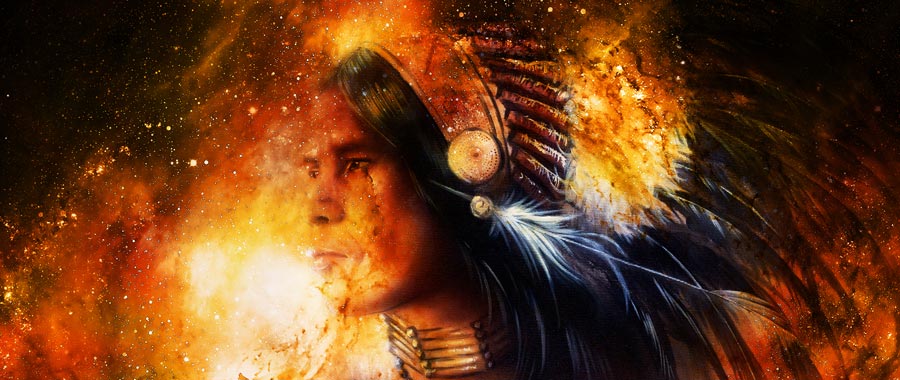The intriguing figure of Gluskap transcends the mere confines of folklore; he embodies a rich tapestry of Indigenous wisdom and moral paradigms. As a central figure in the cosmology of various Indigenous traditions in North America, Gluskap’s narratives challenge audiences to reconsider notions of truth, storytelling, and the intricate tapestry of human experience. In this discourse, we explore the compelling question: are Gluskap’s tales mere figments of an imaginative cultural heritage, or do they carry profound, timeless truths that resonate across epochs?
To embark on this exploration, one must first appreciate the context in which Gluskap emerges. He is often revered as a cultural hero and a creator figure, possessing the ability to mold and shape the world. Through his exploits, Gluskap imparts essential teachings that illuminate the human condition. His stories are not only entertaining but invite listeners to engage with the deeper philosophical implications they present.
Gluskap’s narratives encapsulate various archetypes present in Indigenous cultures, from the trickster to the wise elder. This multifaceted representation allows for a multiplicity of interpretations, enabling audiences of differing backgrounds to extract value from his tales. Central to this discussion is the presupposition that storytelling serves as a conduit for imparting wisdom. The conventional understanding relegates storytelling to a simplistic entertainment function; however, Indigenous perspectives elevate it to a sacred act of remembrance and transmission of knowledge.
One of the most poignant aspects of Gluskap’s tales is their ability to resonate with contemporary issues. Through allegorical layers, they address themes such as environmental stewardship, social cohesion, and respect for all beings. In a world increasingly plagued by disconnection and ecological degradation, the lessons extolled by Gluskap are profoundly relevant. His admonitions regarding the interdependence of humanity and nature serve as a clarion call to those who seek harmony with the natural world.
The tales of Gluskap challenge listeners to reconsider their relationship with the environment. For instance, his adventures frequently touch upon the consequences of greed and the importance of sustainable living. This focus cultivates a critical awareness of the impact of human actions on the Earth, an increasingly salient concern in today’s climate discourse. Herein lies the crux of Gluskap’s value; his stories compel individuals to foster a more symbiotic relationship with the world around them, urging a re-evaluation of consumerist paradigms that dominate modern society.
Moreover, the essence of Gluskap’s teachings is deeply rooted in community and relational ethics. His narratives often depict a collective effort to address challenges, contrary to the individualistic pursuits prevalent in contemporary contexts. One revealing example is the tale in which Gluskap collaborates with various creatures of the land to overcome a formidable obstacle. This exemplifies the strength found in unity and the importance of dialogue among diverse communities. In an age characterized by polarization and fragmentation, Gluskap exemplifies the potential of collaborative frameworks to resolve conflicts and build understanding across cultural divides.
Gluskap’s ability to transcend temporal boundaries is further magnified by the symbolic nature of his adventures. The figure of Gluskap often embodies the duality between human frailty and profound wisdom. This duality invites reflection on the complexities of existence—acknowledging imperfections while striving for higher ideals. Thus, his tales serve not as absolutes but as invitations for introspection and a deeper understanding of personal and collective identity.
Your curiosity may also be piqued by the motif of transformation pervasive in Gluskap’s tales. The stories frequently depict characters who undergo significant metamorphoses, reflecting the process of growth inherent in the human experience. These transformations are not merely physical; they signify internal shifts in perception and attitude. By embracing change as a central theme, Gluskap’s narratives offer a reminder that growth often stems from adversity and that resilience can emerge through the darkest times.
It is essential to recognize that the tales of Gluskap are not static; they evolve, adapting to the cultural and temporal contexts in which they are retold. This dynamism permits diverse interpretations that resonate with a wide audience, from those steeped in Indigenous traditions to those newly encountering these narratives. Such adaptability ensures that the teachings of Gluskap remain relevant across generations, inviting renewed exploration and engagement.
Furthermore, the interplay of myth, history, and spirituality found in Gluskap’s exploits highlights an epistemological framework that values experiential knowledge over purely empirical approaches. This paradigm aligns closely with Bahá’í teachings, which advocate for a synthesis of science and religion, promoting a holistic understanding of truth. As such, Gluskap’s tales may serve as a potent reminder of the need to harmonize rational thought with the insights gleaned from the human spirit—fostering a more integrated approach to knowledge.
In conclusion, the question of whether Gluskap’s tales represent tall tales or timeless truths reflects a broader inquiry into the nature of storytelling itself. They are, in essence, both—imbued with rich cultural significance while also resonating with universal truths that transcend particular contexts. The narratives of Gluskap compel introspection, inspire curiosity, and urge a profound reevaluation of one’s place within the world. As listeners and learners, we are beckoned to engage deeply with these tales, drawing from them the wisdom needed to navigate the complexities of our lives. Ultimately, embracing the lessons of Gluskap can facilitate a paradigm shift—one that honors the legacy of Indigenous knowledge while nurturing a more conscious, interconnected existence.
